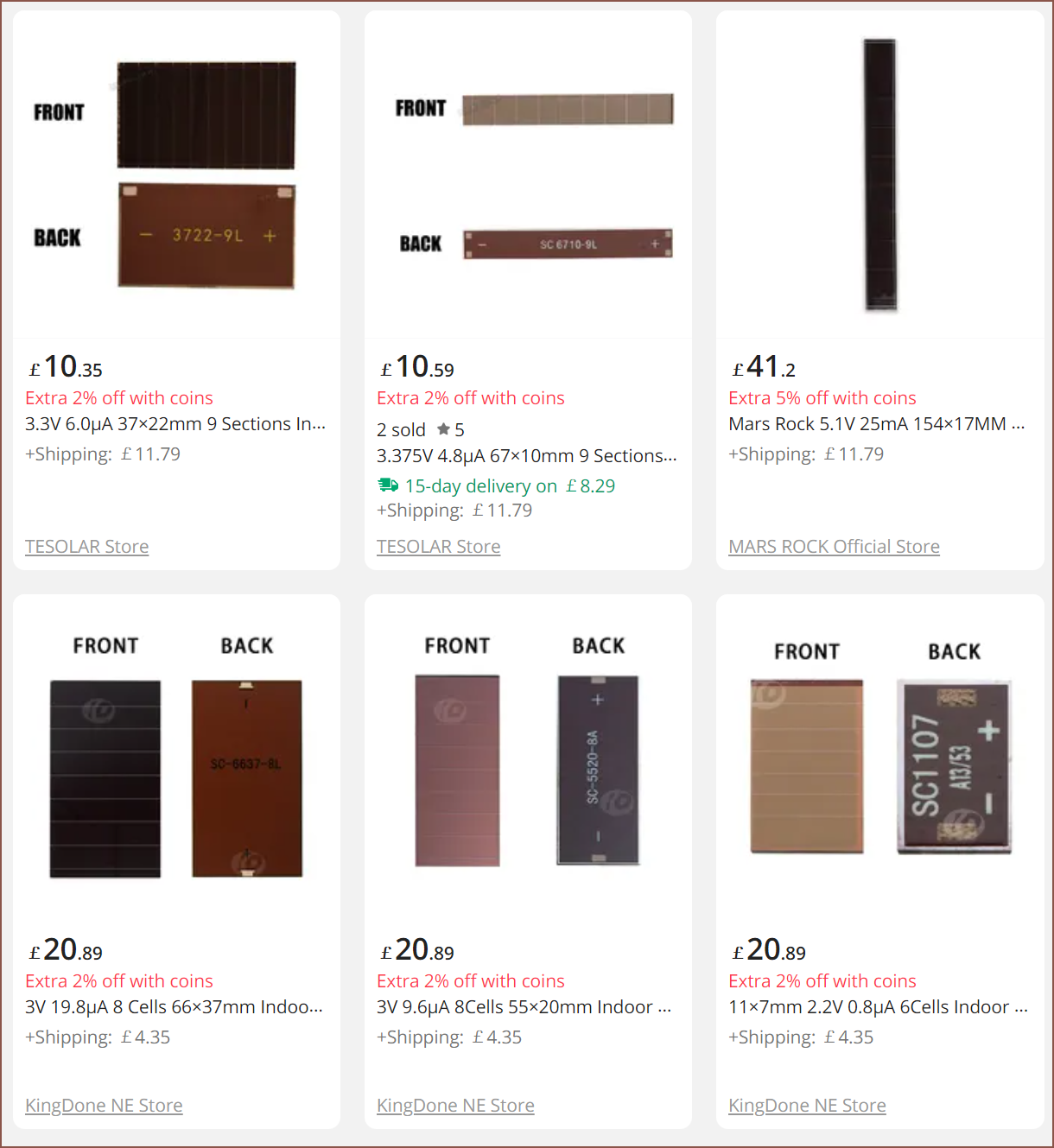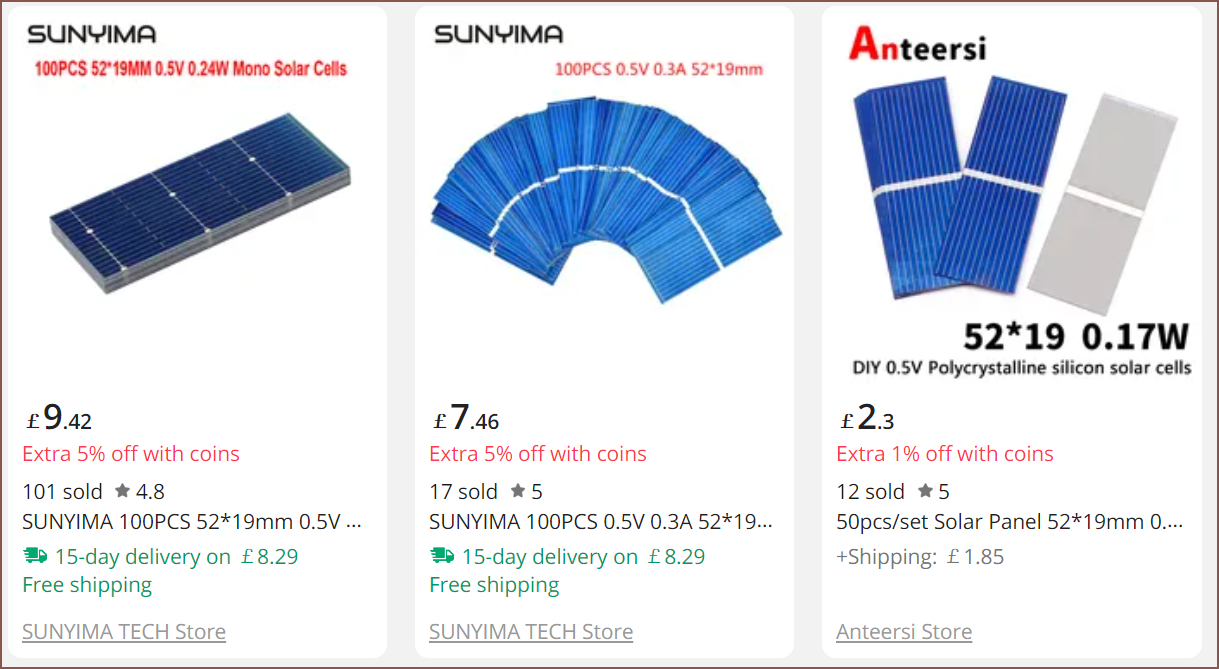The panel that I've just modelled in the previous log is a polycrystaline panel. I've also recently found "low light" amorphous panels, which are the reddish tint panels seen on calculators and solar keyboards. Unlike the calculators they're usually installed in, these things are really expensive on AliExpress for some reason: Take a look for these listings:

Now, I looked into this and there's this video that showed the amorphus panel generating 50% more than the polycrystaline, but it was also physically larger because a polycrystaline can generate the same power as an amorphous with a smaller area if in direct sunlight.
They're also 1.1mm thick, generate voltages higher than the 0.6V from the polycrystaline and have solder pads on the back, so much easier to integrate into designs without them breaking.
The easiest source of comparison would be the 52x19mm polycrystaline vs the 55x20mm amorphous:

Amorphous 4V @ 12.3uA: 0.0492 mW Sunyima's polycrystaline: 240.0000 mW
Perhaps this drastic difference is due to the different light intensities they were tested under?
Considering that I want to use Tetent to get more time outside and because I want all the panels to be of the same voltage level, I'll stick with polycrystaline.
 kelvinA
kelvinA
Discussions
Become a Hackaday.io Member
Create an account to leave a comment. Already have an account? Log In.